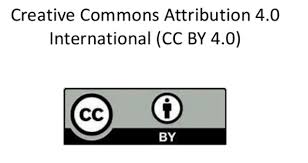7. Socio economic status of beef fattened farmers of Kaunia upazila at Rangpur district of Bangladesh
DOI:
https://doi.org/10.47440/JAFE.2021.2307Keywords:
Beef fattening, farmer, education, land size, family income.Abstract
The study was aimed to assess the socio economic status of livestock farmers and ongoing beef fattening practices at some selected areas of Rangpur district of Bangladesh. The study was carried out through a structured questionnaire among 45 selected farmers during February to May, 2020.Parameters studied were the farmers age, level of education, occupation, household size, land size, source of capital, family income from cattle fattening, farm size, net income from cattle fattening, problems regarding cattle fattening. It was found from the study that the respondents were aged from 25 to 60 years and most of them were male. Majority of the farmers (44%) farmers belong to middle-aged category compared to young (31%) and old aged (24%) farmers. Majority of the farmers family size were small (42%). It was found that the majority of the marginal farmers engaged in beef fattening (46%). About 47% beef fattening farmers had primary education followed by SSC level education (24%) and 16% farmers had no education. About 56% farmers used own capital for fattening, while 33,7 and 4% farmers got loan from NGO, other people and bank respectively. Majority of the farmers (42%) reared 2-5 beef cattle and the herd size was found reciprocal with number of farmers. Most of the farmers (44%) reared indigenous bulls compared to crossbred (24%) and mixture of both (31%). A significant number of farmers reared uncastrated bulls (89%) and nobody reared cow or heifer for fattening. Majority of the farmers’ fattened cattle only before Eid-ulAdha (58%) and only 24% farmer fattened cattle round the year and the rest of the farmers practiced seasonal fattening. Majority of the beef fattened farmers used the cow dung as fuel (44%) rather than other beneficial utilization. Compost and vermicompost production practices were done by 22 and 2% farmers, respectively in the study area. Therefore, it would be stated that rural people had a great contribution on beef production in Bangladesh.





 Publisher: Society of Agriculture, Food and Environment | ISSN (Online Version): 2708 - 5694
Publisher: Society of Agriculture, Food and Environment | ISSN (Online Version): 2708 - 5694 